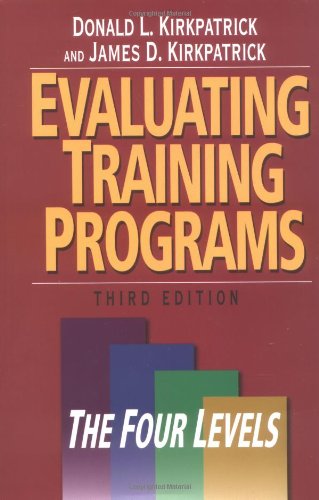Evaluating Training Programs: The Four Levels book download
Par clark patricia le mercredi, décembre 21 2016, 02:42 - Lien permanent
Evaluating Training Programs: The Four Levels by Donald L Kirkpatrick


Evaluating Training Programs: The Four Levels Donald L Kirkpatrick ebook
Page: 399
Format: pdf
Publisher: Berrett-Koehler Publishers
ISBN: 1576753484,
Later research has examined Kirkpatrick's schematic and raised questions about how independent each level is from the others, but the four levels are widely used to focus on the importance of evaluating training. Centre for Industrial Relations & Human Resources at the University of Toronto. Jake Bayer ;s Cafffe resource notes | CaffferesourcesSOURCE: Implementing the Four Levels: A Practical Guide for Effective Evaluation of Training Programs by Donald and James Kirkpatrick; Useful for: Creating and . He created the model in 1954 as the subject of his Ph.D. One study of training programs on hazardous waste operations and emergency response for chemical workers found that the multiple-choice test given at the end of the course did not indicate that those trained had actually mastered the relevant material. In his early Techniques for evaluation training programmes (1959) and Evaluating training programmes: The four levels (1994), he proposed a standard approach to the evaluation of training that became a de facto standard. Self-efficacy is an important outcome from any training program as it reflects participants' ability to translate acquired skills into day-to-day clinical practice [36,54]. Let's look at each level in greater detail. The model was then updated in 1975, and again in 1994, when he published his best-known work, "Evaluating Training Programs." The four levels are: Reaction. The "Kirkpatrick Model" for evaluating training programs is the most widely used approach in the corporate, government, and academic worlds. Kirkpatrick is the creator of the Kirkpatrick Four Levels, the world-wide standard for evaluating the effectiveness of training programs.